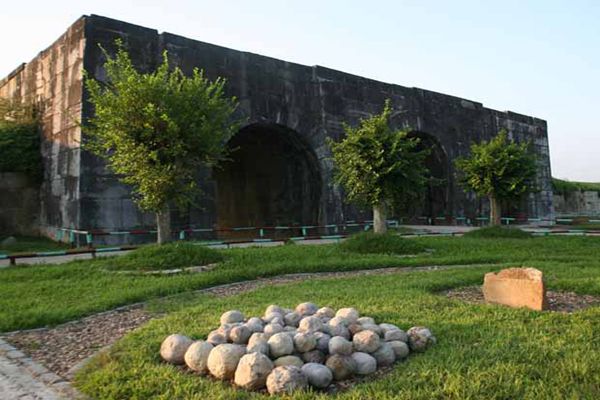
Are its cords made of silk or thread?
The sounds of the tinh penetrate the ear and the heart.
Its high-pitched melodies resound over treetops and mountain peaks.
The gibbons listen so closely that they stumble and fall, forgetting their children
Birds fly out of their nests, surprised and excited
Cicadas perching on blossom branches stop buzzing
Young men and women, who are singing and laughing, suddenly stand still
And tell each other to keep silent and listen.
What is your magical charm, dear passionate tinh?
The twelve chords inside me are awakened.
The tinh has a simple and rudimentary structure. Its handle is made from the wood of a mulberry tree. The resonance box is a dry, hollowed-out gourd and the strings are thin, durable silk threads twisted together.
People in Lang Son have played the tinh for as long as anyone can remember. Shaman tradition claims that the gods taught humans to play and sing the tinh in a dream. Therefore, the tinh is also called the then, which comes from the word thien meaning “heaven”. The songs that are sung with this musical instrument are referred to as hat then.
An alternate, though perhaps equally legendary, explanation of the origin of hat then claims that in the late 16th century, King Mac Kinh Cung was defeated by the restored Le Dynasty and retreated to the Lang Son and Cao Bang provinces. The King’s soldiers suffered from serious illnesses, partly out of homesickness and partly because they were not used to living in the mountains. Mac Kinh Cung ordered two musicians, Be Ban Phung and Quynh Van, to compose melodies to comfort and heal the soldiers. Then singing was born. Hearing the music, more than half of the soldiers recovered. The King was so grateful that he ordered the musicians to spread hat then among the common people.
The music of the tinh can be slow or fast, high-pitched or low, happy or sad. An old folk saying describes the effects of the instrument as follows:
Old people hear the then melody in the streets
They seen to turn young when arriving at home.
Then lyrics cover many aspects of people’s lives: advice, encouragement, experience, thoughts and emotions. People sing then in both community and family settings, such as village festivals, ceremonies, New Year’s celebrations, house blessings, weddings, longevity celebrations, newborn child celebrations and so on. They also sing then to encourage the depressed, comfort the ill and cry for the dead. Most Tay and Nung people enjoy singing and listening to then. Whenever there is a hat then ceremony in the village communal house of any community, most villagers attend. Some people earn their living by composing then, while other musicians are amateurs.
The folk music of Lang Son reflects the spirit and cultural identity of people in the north-eastern mountain provinces and local residents are working to develop additional performance troupes to preserve this valuable art form.
Vietnam Cultural Window










(84-63) 3 826042 – (84-63) 3 511142
No 54 Nguyen Dinh Chieu, Ham Tien Central Mui Ne Beach Binh Thuan Vietnam
523 To Hien Thanh District 10 Ho Chi Minh City Vietnam
Ha Long Halong City Quang Ninh Vietnam
A13 Hung Thong 2 Halong City Quang Ninh Vietnam




